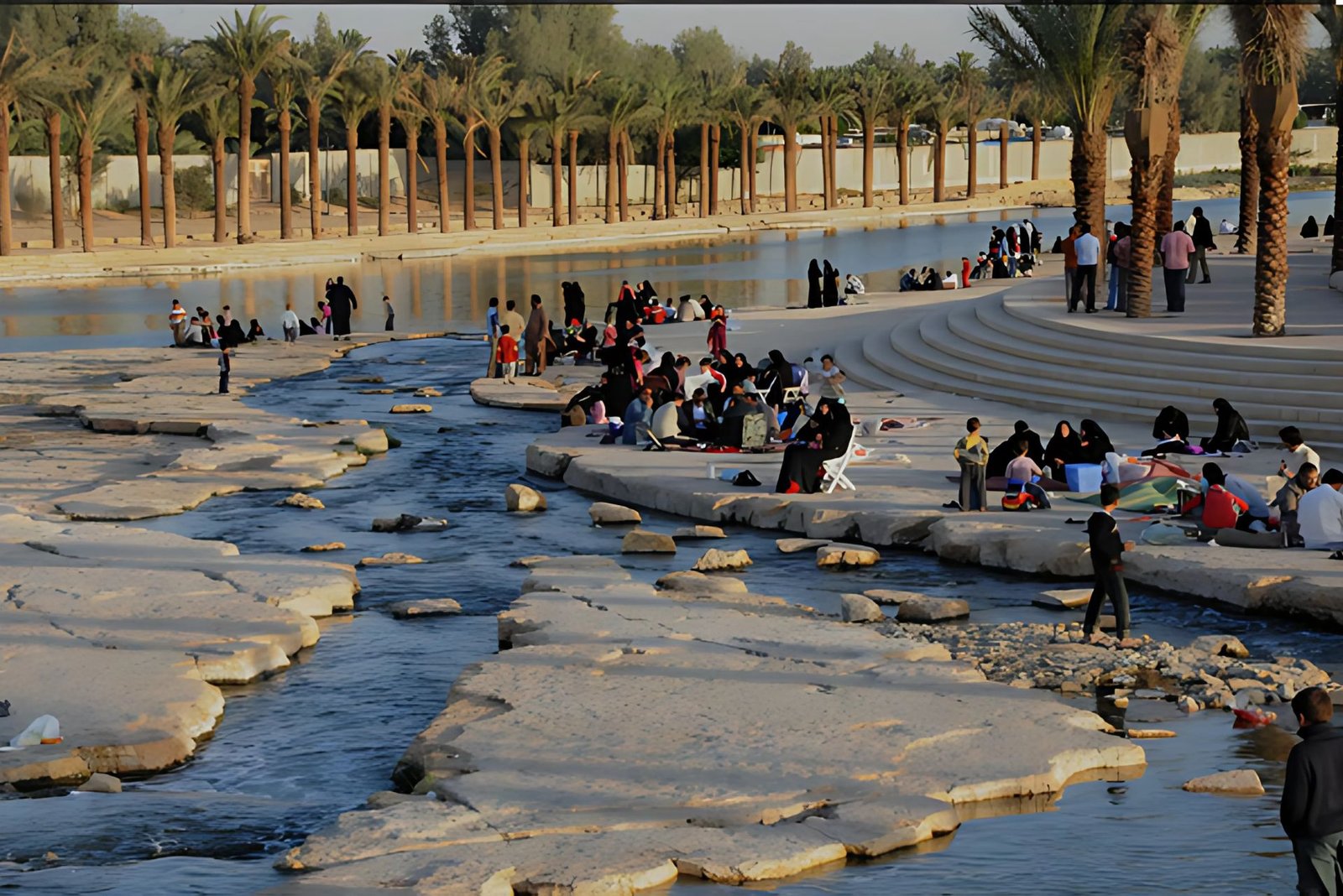Complete Guide to Wadi Hanifah in Riyadh: History, Restoration, and Recreation
Wadi Hanifah is a remarkable natural and cultural landmark that runs through the heart of Riyadh, Saudi Arabia. Stretching over 120 kilometers, this valley is not only the longest and most significant wadi in the region but also a symbol of environmental restoration, heritage, and urban development. Once neglected and misused, Wadi Hanifah has been transformed into a vibrant ecological and recreational space, attracting locals and tourists alike.
This comprehensive guide explores the history, geography, ecological importance, restoration efforts, recreational activities, and practical information about Wadi Hanifah in Riyadh. Whether you are a nature lover, history enthusiast, or a visitor planning a trip, this article will provide you with all the essential details.
What is Wadi Hanifah?
Wadi Hanifah (Arabic: وَادِي حَنِيْفَة), historically known as Wadi al-Arad, is a seasonal river valley (wadi) located in the Najd region of Riyadh Province. It extends approximately 120 kilometers from northwest to southeast, cutting through Riyadh city and its surrounding towns such as Uyaynah, Irqah, and Diriyah.
The valley serves as a natural water drainage system for an area exceeding 4,000 square kilometers, making it a crucial geographical feature in this arid region. Its fertile soil and water resources historically supported agriculture and settlements, playing a vital role in the development of Riyadh and the Saudi state.
Historical Significance of Wadi Hanifah
- Ancient Roots: The valley was originally known as al-Irdh and later renamed after the Banu Hanifa tribe, prominent during the Islamic conquest of Arabia.
- Cultural Heritage: The emirate of Diriyah, the first Saudi state’s capital, was established on the western banks of Wadi Hanifah, highlighting its historical importance.
- Agricultural Legacy: In prehistoric times, the region experienced heavy rainfall, making the valley fertile and suitable for farming, a fact reflected in local traditions and archaeological findings.
Geography and Climate
| Feature | Details |
|---|---|
| Length | 120 kilometers (75 miles) |
| Location | Najd region, Riyadh Province |
| Climate | Arid desert climate |
| Average Summer Temp | 42.9 °C (109.2 °F) |
| Annual Rainfall | Approximately 60 mm (2.4 inches) |
| Terrain | Limestone soil, interspersed with vegetation |
The valley experiences intense but infrequent rainfall, leading to flash floods. The dry and warm climate causes rapid evaporation, with most water percolating into underground aquifers.
Environmental Challenges and Restoration
Historically, rapid urban expansion of Riyadh led to environmental degradation in Wadi Hanifah. The valley became a dumping ground for waste and construction debris, and industrial activities caused pollution and erosion.
Restoration Efforts
In 1986, the Arriyadh Development Authority (ADA) initiated a comprehensive restoration project to rehabilitate Wadi Hanifah. The project included:
- Wastewater Treatment: Installation of environmentally sensitive wastewater treatment plants to improve water quality.
- Landscaping and Conservation: Reintroduction of native plants, creation of green spaces, and protection of natural habitats.
- Recreational Development: Construction of walkways, picnic areas, and parks for public enjoyment.
- Agricultural Enhancement: Revitalization of agricultural lands along the valley.
- Flood Control: Engineering works to manage flash floods and protect urban areas.
These efforts transformed Wadi Hanifah into a thriving natural oasis and earned the project the Aga Khan Award for Architecture in 2010.
Recreational Activities and Attractions in Wadi Hanifah
Wadi Hanifah offers a variety of activities and attractions for visitors:
- Hiking and Walking Trails: Scenic paths along the valley allow for hiking, jogging, and nature walks.
- Picnic Spots: Designated areas with seating and shade for family outings.
- Birdwatching: The valley is a habitat for migratory birds, making it a popular spot for bird enthusiasts.
- Fishing and Boating: Some sections of the valley have water bodies suitable for fishing and small boat rides.
- Cultural Sites: Nearby historic towns like Diriyah offer rich cultural experiences linked to Wadi Hanifah’s heritage.
Table: Key Features of Wadi Hanifah
| Feature | Description |
|---|---|
| Length | 120 km |
| Location | Riyadh Province, Saudi Arabia |
| Historical Importance | Site of first Saudi state, Banu Hanifa tribe |
| Climate | Arid desert, hot summers, scarce rainfall |
| Restoration Authority | Arriyadh Development Authority (ADA) |
| Awards | Aga Khan Award for Architecture (2010) |
| Recreational Facilities | Trails, picnic areas, birdwatching spots |
| Environmental Impact | Wastewater treatment, landscaping, flood control |
How to Visit Wadi Hanifah
- Best Time to Visit: Cooler months from October to March are ideal due to milder temperatures.
- Access Points: Multiple entry points along the valley, including near Diriyah, Al-Shifa, and Al-Urayja.
- Transportation: Accessible by car or taxi from Riyadh city center.
- Facilities: Parking, restrooms, and picnic areas available at major recreational spots.
FAQs
Q1: What is the significance of Wadi Hanifah in Riyadh?
A: Wadi Hanifah is the longest valley in Riyadh, historically and environmentally significant as a natural watercourse and cultural landmark.
Q2: Can I hike and picnic in Wadi Hanifah?
A: Yes, the valley has been developed with hiking trails and picnic areas for public use.
Q3: How was Wadi Hanifah restored from pollution?
A: The Arriyadh Development Authority implemented wastewater treatment, landscaping, and conservation projects to restore the valley.
Q4: Are there any historical sites near Wadi Hanifah?
A: Yes, the historic town of Diriyah, the first Saudi state’s capital, lies on the western bank of the valley.
Q5: Is Wadi Hanifah suitable for birdwatching?
A: Absolutely, it is a habitat for migratory birds and a popular spot for birdwatchers.
Conclusion
Wadi Hanifah stands as a testament to Riyadh’s commitment to balancing urban growth with environmental preservation. From its rich historical roots to its modern-day transformation into a green oasis, Wadi Hanifah offers residents and visitors a unique blend of nature, culture, and recreation. Whether you want to explore its scenic trails, enjoy a peaceful picnic, or delve into Saudi Arabia’s heritage, Wadi Hanifah is a must-visit destination in Riyadh.
Plan your visit to experience the valley’s beauty and learn about the remarkable journey of restoration that has turned a once-neglected wadi into a thriving ecological and cultural landmark.







